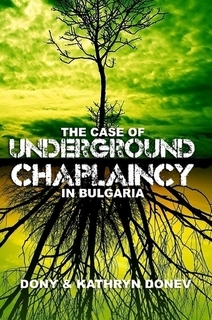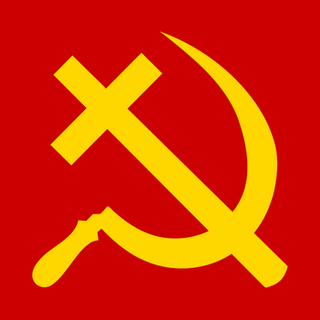THE CASE OF UNDERGROUND CHAPLAINCY IN BULGARIA
 This book embodies documents, articles and essays dealing with the rediscovering and reestablishing of chaplaincy ministry in Bulgaria after the fall of the Berlin Wall in 1989, including the envisioning and establishment of the Bulgarian Chaplaincy Association and it’s proposal for the reestablishment of chaplaincy within the Bulgarian Armed Forces submitted to NATO’s Manfred Wörner Foundation in 2006, which subsequently led to the envisioning and establishment of the Master’s Program in Chaplaincy Ministry via the Bulgarian Evangelical Theological Institute and New Bulgarian University of Bulgaria in 2009.
This book embodies documents, articles and essays dealing with the rediscovering and reestablishing of chaplaincy ministry in Bulgaria after the fall of the Berlin Wall in 1989, including the envisioning and establishment of the Bulgarian Chaplaincy Association and it’s proposal for the reestablishment of chaplaincy within the Bulgarian Armed Forces submitted to NATO’s Manfred Wörner Foundation in 2006, which subsequently led to the envisioning and establishment of the Master’s Program in Chaplaincy Ministry via the Bulgarian Evangelical Theological Institute and New Bulgarian University of Bulgaria in 2009.
The Bulgarian Underground Church
 The modern day Pentecost began in Bulgaria in the 1920s as Ukrainian immigrants Zaplishny and Voronaev preached in the Congregational church of Bourgas where several were baptized with the Holy Spirit. In the late 1920s a conservative Pentecostal group emerged and formed the union called the Church of God. After the 1944 Communist Revolution in Bulgaria it continued its existence as an underground organization and was severely persecuted. In 1986, the Bulgarian Church of God joined the Church of God (Cleveland, TN). A national revival followed the fall of the Berlin Wall in which hundreds of thousands of people have been touched by the power of God. Today, the Bulgarian Pentecostal Movement claims over 100,000 members.
The modern day Pentecost began in Bulgaria in the 1920s as Ukrainian immigrants Zaplishny and Voronaev preached in the Congregational church of Bourgas where several were baptized with the Holy Spirit. In the late 1920s a conservative Pentecostal group emerged and formed the union called the Church of God. After the 1944 Communist Revolution in Bulgaria it continued its existence as an underground organization and was severely persecuted. In 1986, the Bulgarian Church of God joined the Church of God (Cleveland, TN). A national revival followed the fall of the Berlin Wall in which hundreds of thousands of people have been touched by the power of God. Today, the Bulgarian Pentecostal Movement claims over 100,000 members.
However, this was hardly the case through the years of persecution when the Bulgarian Church of God refused to register with the Communist state and remained underground for over 45 years. Recently published archives from that era show that the Bulgarian underground church grew slowly during the Communist regime experiencing virtually constant crises in leadership and structure. At the same time the government aggressively attempted to penetrate and influence the organization of the church in order to revert its growth.
One of the earliest archive documents from that era is a 1974 study which reported that the Bulgarian Church of God had 600 members nationwide. By 1981, the membership had grown to over 2,000 members with congregations in 25 cities. The congregation in the capital Sofia had 100-150 members, but grew to over 200 by the end of 1982. At the same time, the Bulgarian Pentecostal Union (registered with the government and affiliated with the Assemblies of God) had approximately 10,000 members.
A detailed list of churches and members was kept in government archives as the secret service was ordered to watch the underground church closely. The agent’s logs from that time show approximately 1,000 known members. This number is only a fraction of the actual membership, which at large remained underground and hidden from the eyes of the agents.
The pressure from the secret service was not able to stop the growth of the underground church. By 1985, the Bulgarian Church of God had grown to 3,000 members nationwide while doubling the number of congregations to over 50. Two years later this number was 4,000 and continued to grow as the central church in the capital Sofia had 600 members and several churches (like the ones in Rouse and Gabrovo) had congregations over 200. In 1989, the Communist regime collapsed and Bulgaria began its journey on the road of democracy. In 1990, the Bulgarian Church of God received government recognition as an official denomination representing over 5,000 nationwide to become the fastest growing Bulgarian church with over 30,000 members today.







